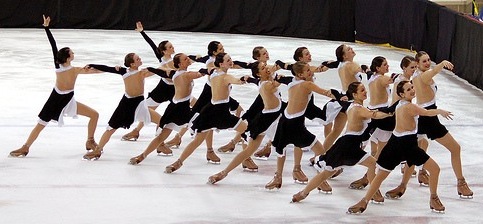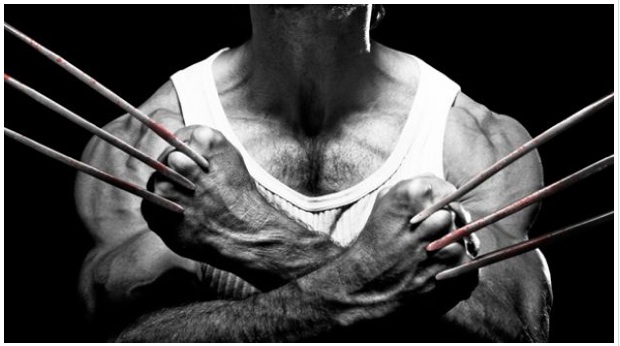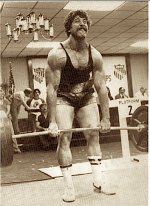Unilateral Lunges Exercise - Your Lunges and Squats Secrets Revealed

How can the unilateral lunges exercise help build you a leaner and stronger body?
The following lunges and squats secrets reveal how.
Lunges and Squats Benefits
If you follow the information on this site, you will be aware of the squat exercise's importance.
Want to get strong? Build a leaner body?
These are just some of the lunges and squats benefits you can expect from this proven king of exercises.
But what if the squat exercise was hiding a secret from you?
What if - as science suggests - a variation of this heralded mass builder could actually boost your efforts in the gym resulting in greater gains?
Check this out:
And the exciting news? This squat variation can start working its magic for you today.
Unilateral Lunges - How Do They Work?
So what is unilateral training, and how can it help you?
Unilateral training is simply a way of exercising one side of your body at a time. (Not to be confused with alternate dumbbell curls where you perform a rep with your left arm, then repeat with your right, etc. Here you complete your work set for one side of your body BEFORE moving to the other.)
But why is this training style so effective, and how can it benefit the lunges exercise?

Photo courtesy of Rich Moffitt
Unilateral Lunges Exercise - Your Lunges and Squats Secrets Revealed
1. Pistol Power.
When training the legs in a unilateral fashion, your body weight plays a much greater role in the level of resistance.
An example?
Try comparing an unweighted two-legged squat with the difficulty of performing a pistol squat.
The pistol squat will be significantly tougher to execute because of the way your loss of balance forces you to work extra hard to complete the movement.
2. Unilateral Strength.
Bilateral leg training doesn't necessarily translate into unilateral strength.
How is this important?
While there are many athletes who can squat twice or more their own body weight for repetitions, they will commonly struggle to perform even one deep pistol squat.
3. Function First.
Unilateral training forces you to work hard to maintain balance. This balancing work is achieved by the recruitment of extra stabilizer muscles resulting in a stronger, more injury resistant trainee.
Want to try an experiment?
At your next workout, substitute lunge exercises like the one-legged squat in place of the traditional two-legged squat.
By training in a more functional way, you will develop more functional strength - a crucial benefit of unilateral training.
4. Effortless Energy.
Consider how tiring a heavy session of deadlifts is on your body: it works your posterior chain, quads, shoulders, back, and everything in between.
Now compare this to the single leg version.
This variation tends to isolate the glutes and hamstrings, whilst reducing the load on the rest of your body.
The same applies for the lunge exercise squat variation. Your need to compensate for your loss of balance - and the subsequent reduction in the amount of weight you can lift - means its demands are nowhere near as taxing as the traditional squat.
The benefit to you?
You get to better focus on the muscle you are working while avoiding fatigue.
5. More Muscle with Less Work.
In a bygone age, abbreviated workouts routinely transformed ordinary and average men into "weight-room gods", with exercises like the lunge providing the backbone to such training.
Yet this type of training is more than just old-school lifting. With a long and impressive history, here are some of the many benefits you can experience:
. Develop functional strength,
. Improve muscle imbalances,
. Fun and easy to learn,
. Joint-friendly,
. More muscle with less work,
. Develop balance, coordination and muscle control.
To discover 7 abbreviated workouts to build a lean and strong body, click the picture below.
In Summary
The unilateral lunges exercise is an excellent addition to your strength training arsenal.
Want to get strong? Build a leaner body?
The secrets of lunges and squats reveals how.
Lunges Exercise to Squat Exercise
Lunges Exercise to Muscle Building
Recent Articles
-
Minimalist Training - How Little Can You Do to Get Insanely Strong?
Jun 29, 20 11:35 AM
Hear how minimalist training helped 80s powerlifter Mark Chaillet crush his competition and get insanely strong. -
Deadpool Superhero Workout - Two Critical Exercises to Develop X-Men Strength
Apr 23, 18 05:22 AM
Discover how the Deadpool superhero workout develops freaky fitness and X-Men strength. -
Why Weight Training Too Hard is Hurting Your Gains
Sep 25, 17 10:50 AM
Feeling fatigued? Discover why weight training too hard at the gym is hurting your gains.





